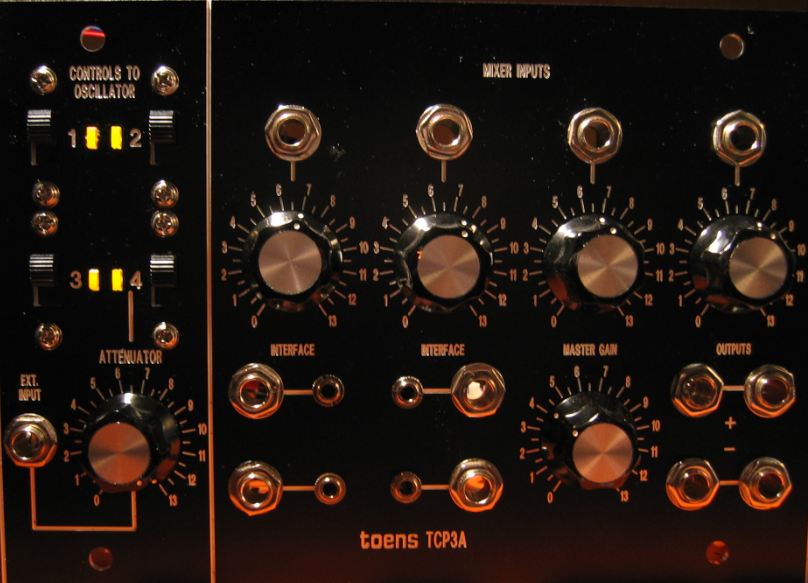
In the center one can find the INTERFACE sockets which are adapters between 6.3 and 3.5 mm plugs.

| The human interface of the CP3A shows the partitioning in two subunits: The control voltage router (CONTROLS TO OSCILLATOR) with EXTERNAL INPUT socket snd ATTENUATOR pot and the 4 channel mixer with MASTER GAIN and the phase inverted outputs OUT + and OUT -.
In the center one can find the INTERFACE sockets which are adapters between 6.3 and 3.5 mm plugs. |
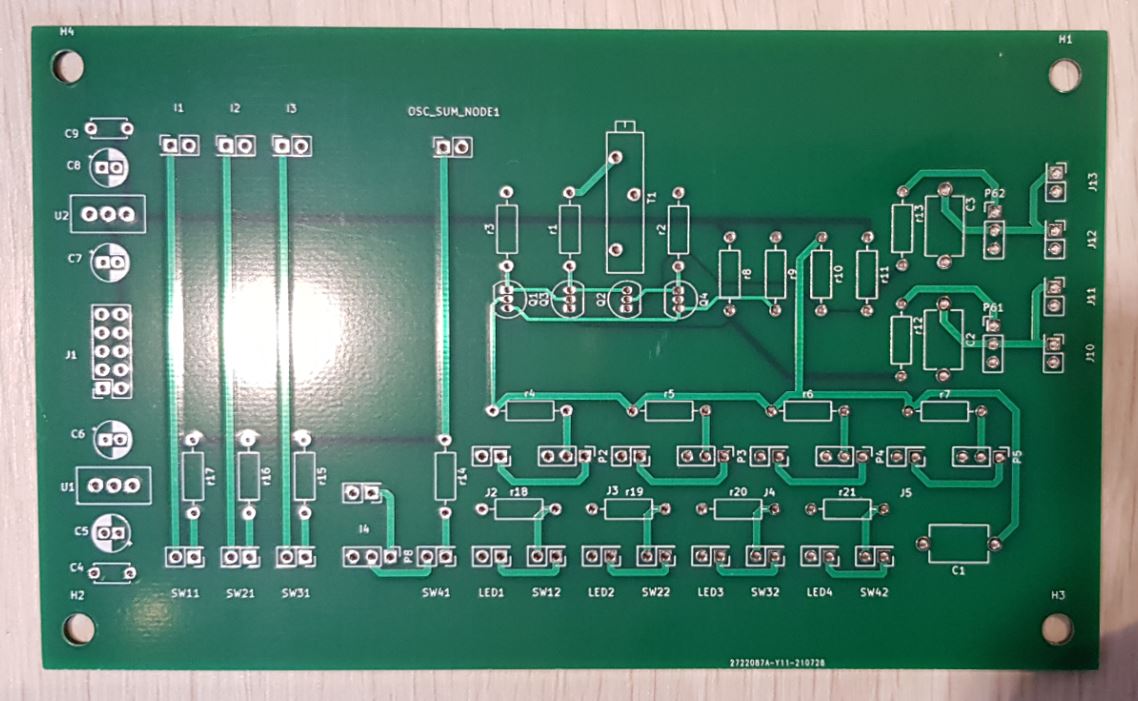 Click to enlarge | 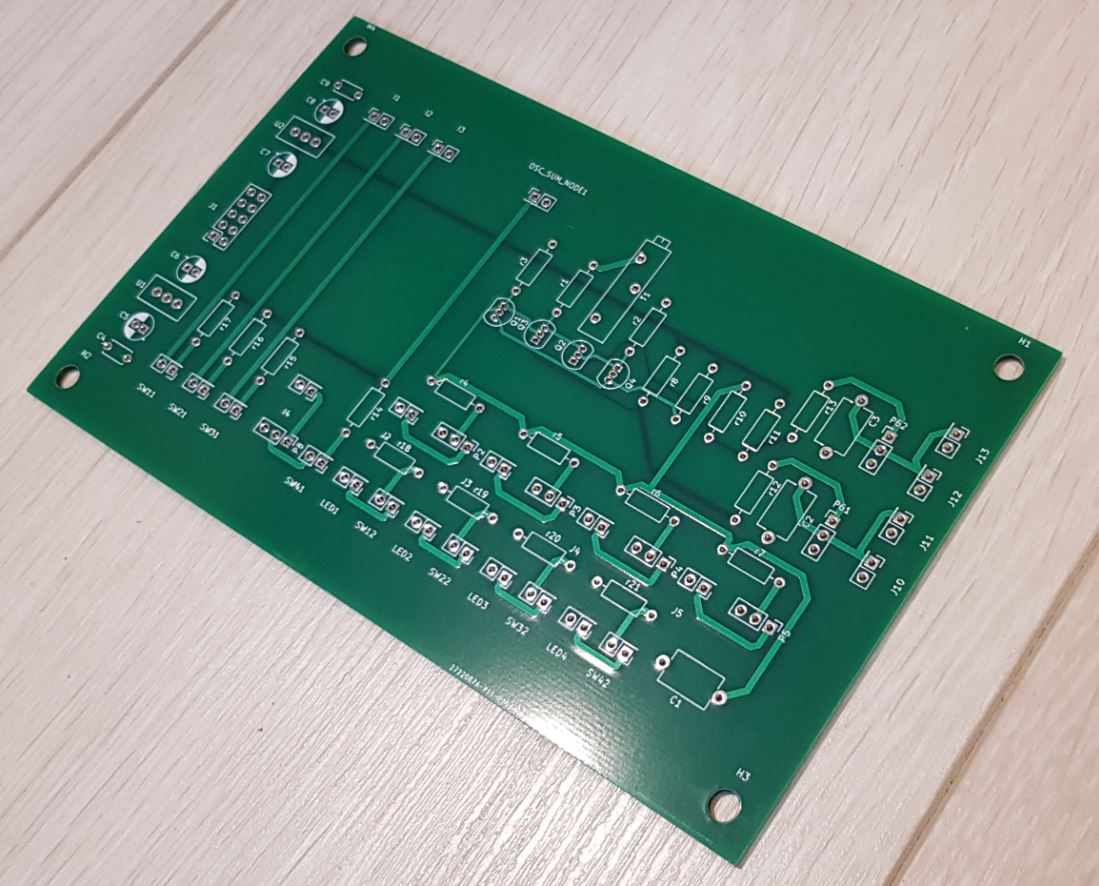 Click to enlarge | 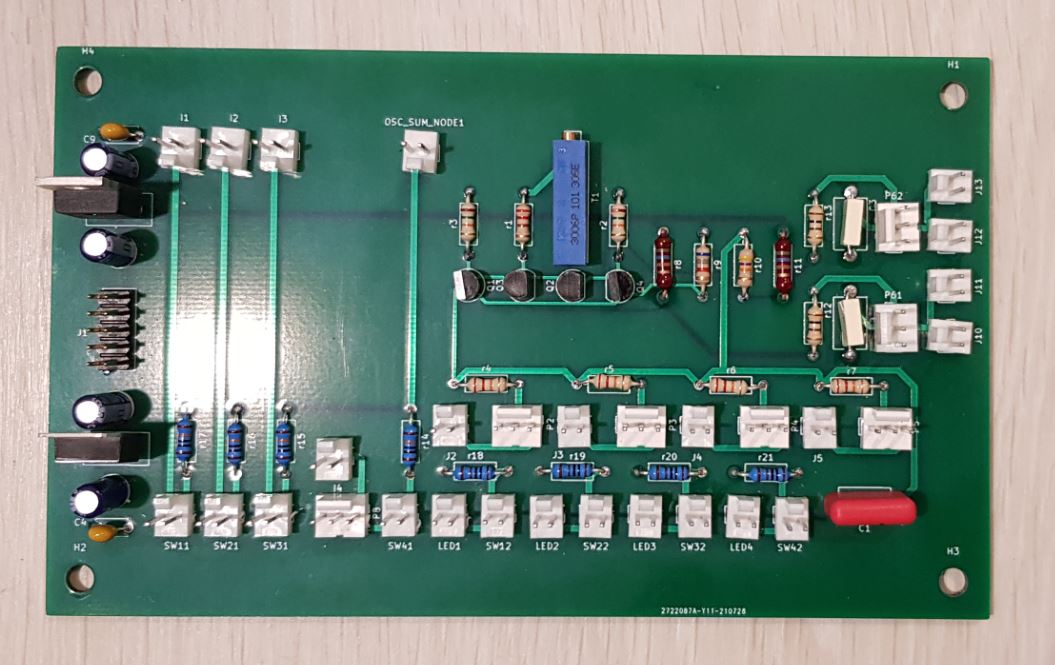 Click to enlarge | 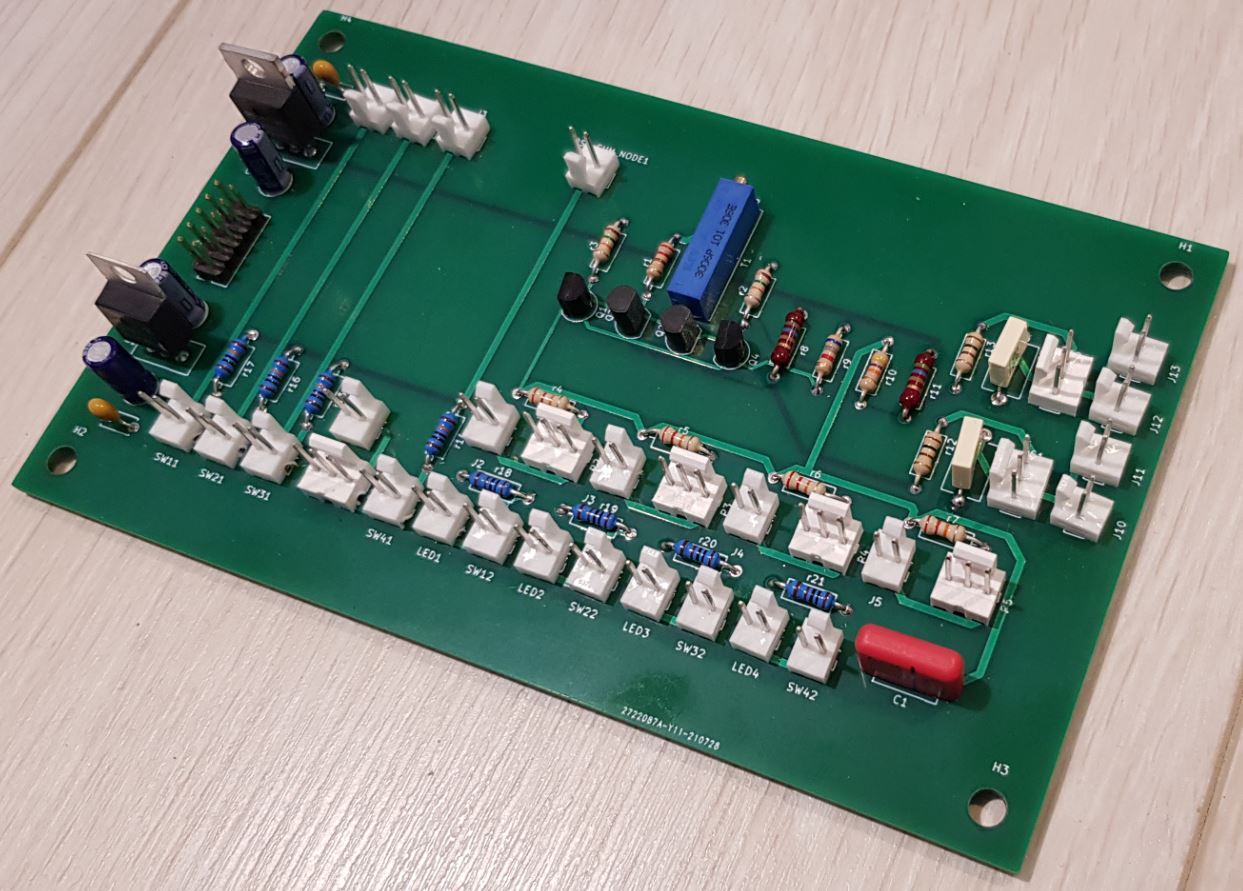 Click to enlarge | Four transistors, some resistors and capacities build this mixer, not more. The rest is IO and CV routing. |